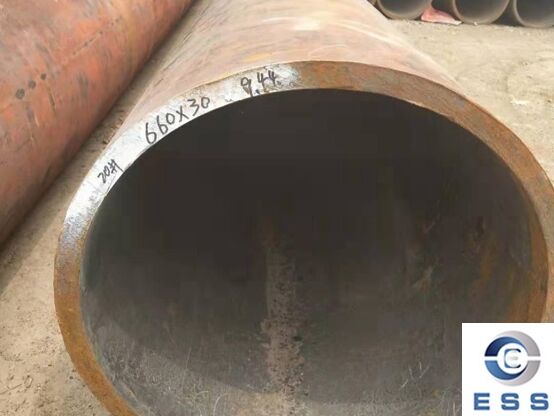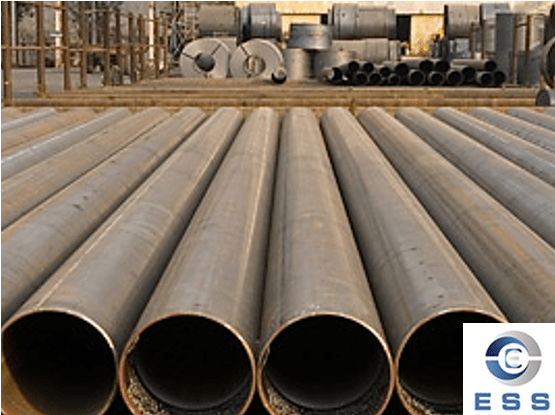
Seamless precision
tube is a type of high-precision steel tube material obtained by cold
drawing or hot rolling. They have no oxide layer on the inner and outer walls,
can withstand high pressure without leakage, and have the remarkable
characteristics of high precision, high finish, no deformation during cold
bending, and no cracks during expansion and flattening.
The production process of seamless
precision tubes is a complex and delicate process. It not only requires high
precision and stability of production equipment, but also requires strict
control of multiple links such as raw materials, processing technology, and
quality control. From the selection of raw materials to the inspection of the
final product, every step is crucial. Seamless precision tubes are widely used
in aerospace, automotive energy, machinery and other industries, carrying an
indispensable mission, especially under high pressure, high temperature and
high strength. It shows extremely excellent performance. How are seamless
precision tubes produced?
The production processes of seamless
precision steel tubes mainly include the following:
1. Hot rolling method
It is one of the main methods for producing
seamless precision steel tubes. First, the round tube billet is threaded into a
rough tube, and then rolled through a series of rollers for multiple times, so
that the rough tube gradually becomes thinner, longer and has uniform wall
thickness, and then it is made into a seamless precision steel tube through
sizing, cooling and other processes.
This process has high production efficiency
and can produce steel tubes with larger diameters, but the surface quality is
relatively poor and the dimensional accuracy is slightly lower.
2. Cold rolling method
It is generally carried out on the basis of
hot-rolled steel tubes. The hot-rolled steel tube is first pre-treated by
pickling and other pretreatments to remove impurities such as surface oxide
scale, and then rolled through multiple cold rolling mills to further reduce
the wall and diameter of the steel tube, and improve the dimensional accuracy
and surface quality.
The seamless precision steel tube produced
by the cold rolling method has high dimensional accuracy and good surface
finish, but it is difficult to produce and has high cost. It is mainly used to
produce high-precision and high-surface quality steel tubes, such as some
precision tube and heat
exchanger tube.
3. Extrusion method
The heated tube billet is extruded through
the die hole by an extruder to change its cross-sectional shape, thereby
obtaining a seamless precision steel tube of the required shape and size.
The extrusion method can produce steel
pipes of various complex cross-sections, with high material utilization and
high production efficiency, but it has high requirements for equipment and high
mold costs.
4. Pipe jacking method
The pipe billet is pushed into the prepared
hole through a special pipe jacking machine, so that it gradually extends and
forms a seamless steel pipe.
The pipe jacking method is suitable for the
production of long-distance large-diameter seamless precision steel pipe, casing pipe and
large-diameter boiler
tube. The precision control of the steel pipe is good during the production
process, but the construction is difficult and requires professional equipment
and technology.
5. Spinning method
The pipe billet is rotated around the
central axis by a spin rolling machine and rolled by a roller at the same time.
This process can produce thin-walled,
high-precision seamless precision steel pipes with high production efficiency
and good control of the size and shape accuracy of the steel pipe, but it has
high requirements for equipment and process.
The following are the main production
process steps of seamless precision tubes:
1. Raw material preparation
Material selection: Select high-quality
steel billets as raw materials. These steel billets need to undergo strict
chemical composition analysis and physical property tests to ensure that they
meet the requirements for the production of precision steel pipes. High-quality carbon
steel pipe, alloy steel pipe, etc. are usually used as raw materials to
ensure that the mechanical properties and chemical composition of the steel
pipes are excellent.
Billet processing: Cut the selected raw
materials into billets of suitable length and perform surface treatment, such
as grinding and cleaning, to ensure that the surface of the steel pipe is
smooth and pollution-free.
2. Heating and piercing
Heating: The billet is sent to the heating
furnace and heated to a suitable temperature, which is about 1200 degrees
Celsius. The fuel is hydrogen or acetylene. The temperature control in the
furnace is a key issue.
Perforation: The perforator is used to
perforate to form the initial shape of the seamless
steel pipe, that is, the rough pipe. During the perforation process, a
cavity is gradually formed inside the billet, and a continuous steel pipe wall
is formed outside. Common perforators include tapered roller perforators, which
have high production efficiency, good product quality, large perforation
diameter expansion, and can perforate a variety of steel grades.
3. Rolling
Cold rolling and finishing: The perforated
rough pipe enters the cold rolling unit for multiple rolling. Cold rolling is
usually carried out on a two-roll or three-roll mill. By gradually reducing the
gap between the rolls, the steel pipe gradually reaches the required size and
accuracy. During the cold rolling process, the surface finish and dimensional
accuracy of the steel pipe are significantly improved.
Hot rolling: The rolling process of some
precision seamless steel pipes may also include hot rolling. Hot rolling is
rolling at high temperature to quickly form the steel pipe and achieve a
certain dimensional accuracy.
4. Heat treatment
The steel pipe after cold rolling or hot
rolling is heat treated to eliminate internal stress, improve the
organizational structure and improve performance. The heat treatment process
includes annealing, normalizing, etc. The specific process parameters need to
be determined according to the material and purpose of the steel pipe.
5. Pickling and surface treatment
In order to remove the oxide scale and
impurities on the surface of the steel pipe and improve the surface quality,
precision seamless steel pipes usually need to be pickled after rolling. After
pickling, surface treatments such as passivation and oiling are also required
to prevent corrosion.
6. Finishing and inspection
Finishing: After heat treatment, the steel
pipe is cut, polished and other finishing treatments are carried out to ensure
that its dimensional accuracy and surface quality meet the standards.
Inspection: The appearance, size and
performance of the produced precision steel pipe are inspected. The inspection
content includes appearance inspection, size measurement, mechanical property
test, etc. Qualified steel pipes will be marked with numbers, specifications,
production batch numbers, etc., and hoisted into the warehouse by crane.
7. Packaging and delivery
The steel pipes that have passed the
inspection are packaged to protect the surface of the pipes from damage. The
packaged steel pipes can be shipped out of the factory for sale.
Summary
The above are the main production processes
and production steps of seamless precision steel pipes. Different processes
have their own advantages and disadvantages. In actual production, the
appropriate process is selected according to different needs and conditions.
Read more: Seamless Steel Pipe Sizes













 Eastern Steel Manufacturing Co.,Ltd not only improve product production and sales services, but also provide additional value-added services. As long as you need, we can complete your specific needs together.
Eastern Steel Manufacturing Co.,Ltd not only improve product production and sales services, but also provide additional value-added services. As long as you need, we can complete your specific needs together.










